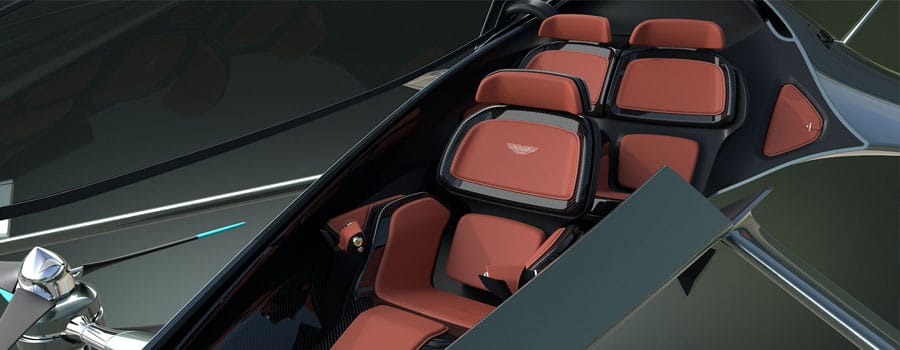The future of driving is up in the air

According to the EASA, within three to five years UAM will become a reality. And if you've got no idea what any of that means, join the club. To clear up any confusion, the EASA is the European Union Aviation Safety Agency; UAM stands for Urban Air Mobility ; and the end result of all of the above…flying cars.
It may sound like science fiction but there are a number of very well-known brands beginning to explore the concept of urban air travel.
The first step for Hyundai's Urban Air Mobility Division – yes, there are indeed entire divisions of enormous multinationals whose sole purpose is to develop the technology to make flying cars a reality - is a new partnership with ANRA Technologies.
Unless you're in the business you probably won't have heard of them though. According to the blurb they provide “end-to-end drone operations and traffic management solutions for unmanned system operators and airspace managers”. We're guessing they are the people who do the air traffic control bit to make sure we don't fly into each other while we're up in the sky.
It's clearly not as simple as just building a flying vehicle then. Given the ability of some people to drive while doing everything - except paying attention to their driving - allowing those people unrestricted access to the skies might not be the most sensible approach.
As you can imagine, there's a whole load of technical jargon regarding operating environments, airspace management, ground mobility integration, mission planning, strategic deconfliction, tracking and monitoring, constraints management, authorisation, and registration. Hyundai's ultimate goal is to create a coalition of global partners to build what they call an Advanced Air Management (AAM) ecosystem. It's incredibly complicated, and best left to experts, but as far as we can tell it basically means organising everything and working out some kind of highway code for the sky.
Not that this means we'll all be flying to the supermarket by the end of the decade.
Initially the technology is likely to be used for delivery and passenger services. It's a logical step that if you can take the delivery vans and buses off the road it clears up space. A bit like the online deliveries by drone that have been experimented with around the world, only on a larger scale. Restricting it ensures that the number of vehicles in the air is limited and easily monitored, which means anyone flying around up there will be a qualified pilot in a suitably airworthy vehicle.
Uber has reached the same conclusion with a $75million partnership with Joby Aviation.

California based Joby Aviation is developing an all-electric vertical take-off and landing aircraft which it intends to operate as a fast, quiet, and affordable air taxi service as early as 2023. The zero emissions aircraft, which can transport four passengers and a pilot, can fly up to 150 miles on a single charge and can cruise at 200 mph.
Under the terms of this deal, Joby Aviation will acquire Uber Elevate alongside the cash investment. Established in 2016, Uber Elevate has much the same goal as the Hyundai partnership. The aim is to bring together regulators, civic leaders, real estate developers, and technology companies to build a shared vision they can agree on before anyone starts applying for licences.
The two companies will also integrate their services into each other's apps for seamless integration between ground and air travel. At some point in the future, you could open a smartphone app in London, book a car to the nearest Vertiport, hop on a flying taxi, and be sitting down for lunch in Birmingham an hour later.
Although…it's not all technical details and commercial air routes for your Amazon deliveries. In proper science fiction style, Aston Martin has indulged in a little world class wishful thinking.
Produced in partnership with Cranfield University, Cranfield Aerospace Solutions and Rolls-Royce, the Volante Vision Concept is exactly what comes to mind when you think about luxury personal transportation in the sky.
With room for three adults, the concept is a preview of a flying autonomous hybrid-electric vehicle for urban and inter-city air travel, providing fast, efficient and congestion free travel. Not that you care about that, because look at it…..! Sure, it's only a concept, and like thousands of other concepts, it will likely never enter production. But tucked away underneath the exquisite Aston Martin design is an unavoidable fact.
The day when you pop to the supermarket in your flying car is a very long way away yet. We may live in the 21st century, but we don't live in the fantastical 21st century that was envisioned back in the 1950s. The Aston Martin still contains a large slice of pie in the sky.
What the likes of
Hyundai
and Uber are doing with their partners is a much more realistic step on the road to flying cars. The glamour and excitement will always lie in the vehicles themselves, but without the framework and infrastructure to back them up they'll never make it beyond the conceptual drawing board.
View our latest blog posts

Categories
Pages
We are a family run business based in rural Worcestershire. Our team of 38 staff are on hand to provide an exceptional service to personal and business customers.
Read More
